15 years one-stop China custom CNC machining parts factory
 312 |
Published by VMT at Feb 19 2025 | Reading Time:About 3 minutes
312 |
Published by VMT at Feb 19 2025 | Reading Time:About 3 minutes
When it comes to manufacturing complex metal parts with high precision, low-pressure die casting (LPDC) stands out as an efficient and cost-effective solution. However, despite its advantages, many businesses still overlook its potential, missing out on the benefits it offers for certain applications. If you’re struggling with producing high-quality castings or facing challenges in improving efficiency, it’s time to explore how LPDC can elevate your manufacturing processes. In this guide, we’ll uncover everything you need to know about low-pressure die casting, from its advantages and disadvantages to its ideal applications in industries like aerospace, automotive, and medical.
Low-pressure die casting is a manufacturing process where molten metal is injected into a mold under low pressure, ensuring precise control of material flow. This process is best suited for producing high-quality castings with excellent surface finishes. By utilizing low-pressure die casting, businesses can achieve parts with superior mechanical properties, reduced porosity, and enhanced durability—an ideal solution for industries requiring high-precision components.
Now that we’ve established the basics of low-pressure die casting, let’s delve deeper into how the process works, its benefits, and when it’s the best choice for your manufacturing needs. We will also compare low-pressure die casting with high-pressure die casting to help you make informed decisions for your projects.
Low-pressure die casting (LPDC) is a manufacturing process in which molten metal is forced into a mold cavity under low pressure (typically around 1-3 bar). This process ensures the metal fills the mold slowly and evenly, producing high-quality castings with less porosity. LPDC is primarily used for materials like aluminum, copper alloys, and zinc. It is ideal for producing parts that require tight tolerances, complex geometries, and smooth surfaces.
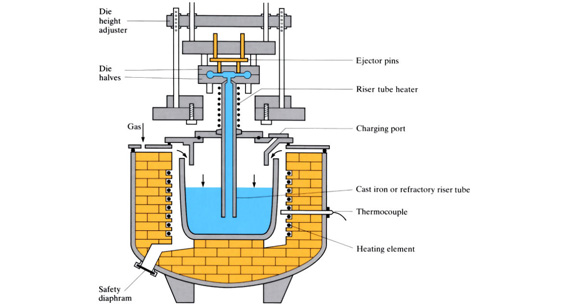
Low-pressure die casting offers several distinct advantages, making it a favored choice for producing high-precision metal parts. One of the primary benefits is high precision—the process ensures that molten metal fills the mold slowly and evenly, minimizing the risk of air pockets and porosity. This results in high-quality castings with superior mechanical properties, which are crucial for industries like aerospace, automotive, and electronics.
Another benefit is cost efficiency in terms of material usage. Since the metal fills the mold under low pressure, it reduces waste, and the process typically requires less energy compared to high-pressure die casting, making it a cost-effective solution for medium-to-high-volume production.
Additionally, low-pressure die casting is known for improving part integrity. The gradual filling of the mold under controlled pressure allows for the production of parts with better dimensional accuracy, reducing the likelihood of defects like air inclusions or voids. This makes it an ideal choice for applications requiring highly complex geometries and thin-walled sections without compromising strength or durability.
Furthermore, low-pressure die casting has excellent versatility. It is compatible with a variety of metals and alloys, including aluminum, zinc, and copper, and is especially useful for producing parts with intricate shapes that might be difficult to achieve using other casting methods.
Low-pressure die casting begins with the preparation of molten metal, which is typically stored in a furnace. The metal is heated to its required pouring temperature, which varies depending on the type of metal being used. Once the metal reaches the desired temperature, it is transferred to a riser tube that leads to the mold cavity.
The key characteristic of low-pressure die casting is that the molten metal is forced into the mold under low pressure (typically between 1-3 bar). A pump system is used to generate the low pressure, which gently pushes the molten metal into the mold. This process allows the metal to flow evenly and fill intricate mold cavities, ensuring that the casting has a smooth surface and high precision.
As the molten metal fills the mold, it begins to cool and solidify. The controlled pressure allows for better management of the cooling process, which ensures that the part maintains uniform properties throughout its structure. Once solidification is complete, the mold is opened, and the part is removed.
This method ensures that the cast part has fewer defects like porosity and air pockets, which are common in other casting methods. It also provides a cleaner surface finish and reduces the need for post-processing, resulting in faster production times and reduced costs.
High Precision:
One of the biggest advantages of low-pressure die casting is its ability to produce parts with high precision. The controlled metal flow allows for the production of components with tight tolerances, which is especially valuable for industries like aerospace and automotive, where dimensional accuracy is critical.
High Purity Castings:
Because the molten metal is poured under low pressure, it has a minimal chance of becoming contaminated. This ensures that the final product has fewer impurities, which is essential for parts that require high structural integrity and resistance to wear and tear.
Good Formability:
Low-pressure die casting enables the creation of complex geometries and thin-walled parts. This makes it ideal for producing intricate parts that might otherwise be difficult or expensive to manufacture using other methods.
Crystallization Control:
The cooling process in LPDC allows for better control over the crystallization of the metal. This results in enhanced mechanical properties, making the cast parts stronger and more durable.
Slower Casting Cycle:
One downside of LPDC is that the casting cycle is slower compared to high-pressure die casting. The slower rate of metal injection can extend production time, making it less ideal for extremely high-volume manufacturing runs.
Corroded Metal Parts:
If not properly maintained, the metal parts used in the process, such as the furnace or mold, can become corroded over time. This can result in degraded quality and require additional maintenance costs.
Not Suitable for Thin-Walled Parts:
Although LPDC is effective for parts with complex geometries, it’s not as effective for producing very thin-walled parts. Thin sections can be difficult to fill completely with molten metal, leading to defects and poor part quality.
At VMT CNC machining factory, we offer comprehensive low-pressure die casting services for various industries, ensuring your parts meet the highest standards of quality and precision. Whether you need custom CNC machining or are looking for reliable CNC machining services to complement your casting needs, our team is here to support you. We understand the intricacies of low-pressure die casting CNC machining parts and can guide you through every step of the process, from design to final production.
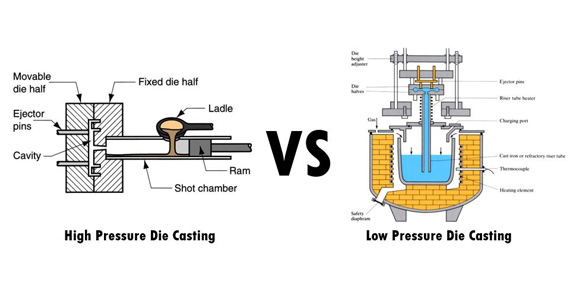
Cycle:
Low-pressure die casting typically has a slower cycle time than high-pressure die casting due to the lower injection pressure. This makes LPDC more suitable for producing fewer parts at a time, while high-pressure die casting excels in high-volume production environments.
Part Strength:
High-pressure die casting tends to produce parts with better structural integrity and surface finish, thanks to the higher injection pressures involved. In contrast, low-pressure die casting can still provide strong parts but may not always match the strength of high-pressure castings in certain applications.
Casting Quality:
Low-pressure die casting offers superior casting quality by minimizing the risk of trapped air and porosity. However, the quality can still vary based on the material used and the precision of the equipment.
Cost:
Low-pressure die casting generally has higher initial setup costs than sand casting or other methods but offers better efficiency in the long run for parts requiring high precision. High-pressure die casting, while more efficient for mass production, tends to be more expensive due to the need for specialized equipment.
Thickness:
LPDC is ideal for producing parts with thicker walls, whereas high-pressure die casting works better for thin-walled components.
When considering manufacturing methods for metal parts, it's essential to understand the alternatives to low-pressure die casting. While low-pressure die casting is an excellent option for producing high-precision parts, several other casting methods offer different benefits, depending on the requirements of the part and its intended application.
Gravity Casting
Gravity casting is one of the most straightforward and traditional casting methods. Unlike low-pressure die casting, which uses an external pressure system to force molten metal into the mold, gravity casting relies solely on the force of gravity to fill the mold. This method is ideal for larger parts with thicker walls, as the molten metal naturally fills the mold cavity without additional pressure. Gravity casting typically works best for non-ferrous metals like aluminum and copper alloys and is often more cost-effective for small to medium production runs.
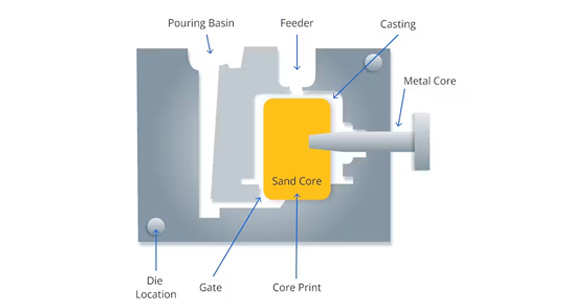
Investment Casting
Investment casting, also known as precision casting or lost wax casting, involves creating a detailed wax pattern that is coated with a ceramic shell. Once the shell is hardened, the wax is melted and drained away, leaving a cavity into which molten metal is poured. This casting process is ideal for complex, high-precision parts with intricate geometries. Investment casting offers superior dimensional accuracy and surface finish compared to many other methods. However, it is more expensive and time-consuming, making it less suitable for high-volume production.
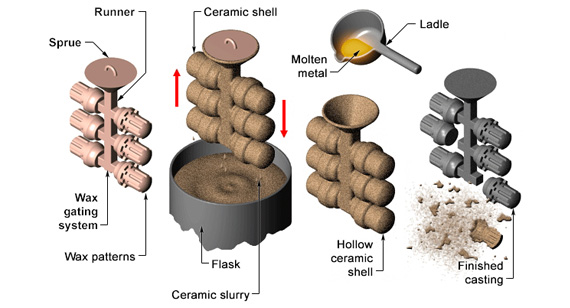
Sand Casting
Sand casting is one of the most commonly used and versatile casting processes. It involves forming a mold using a sand-based mixture, which is then compacted around a pattern. Once the mold is ready, molten metal is poured into the cavity to create the desired part. Sand casting is well-suited for large parts or when the production volumes are lower. It is particularly beneficial for manufacturing parts in a wide range of metals, including ferrous and non-ferrous alloys. However, sand casting may not provide the same level of precision and surface finish as low-pressure die casting.
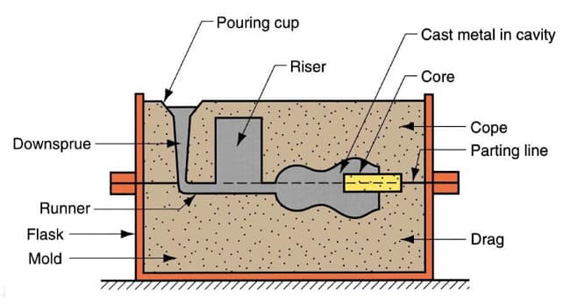
Low-pressure die casting has a broad range of applications across various industries due to its high precision, quality, and cost-effectiveness. Below are some of the key sectors that benefit from this casting method:
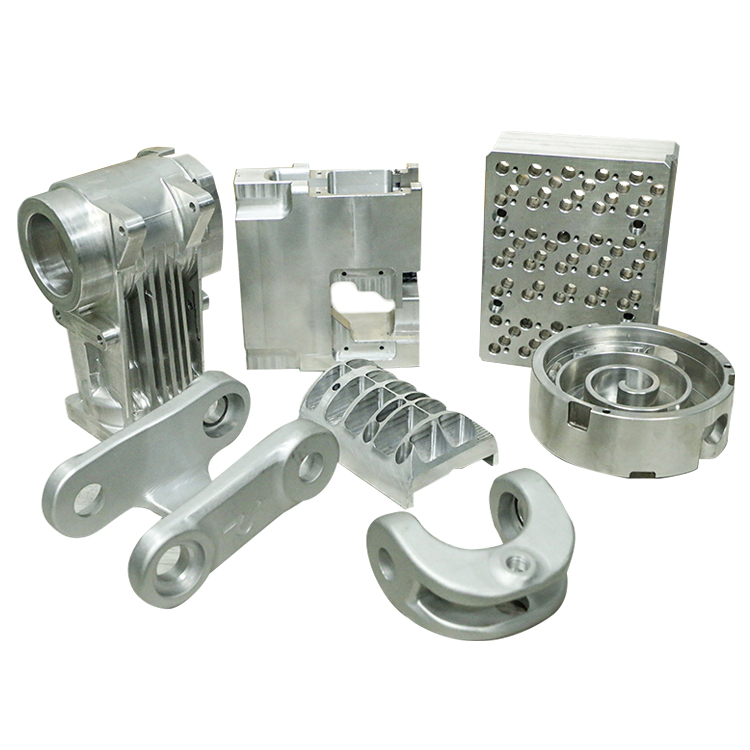
In the automotive industry, low-pressure die casting is widely used to produce engine components, transmission housings, and other critical parts. The ability to manufacture lightweight, high-strength components with intricate geometries makes this process ideal for reducing vehicle weight while maintaining performance and safety standards.
Low-pressure die casting is also used in the electronics industry for the production of heat sinks, housings, and enclosures. This process ensures the components meet tight tolerances, essential for the functioning and longevity of electronic devices. The excellent surface finish and precision are key factors in these applications.
Aerospace
For aerospace components, low-pressure die casting allows the production of high-strength parts that are essential for withstanding the extreme conditions faced during flight. The aerospace industry requires components with high mechanical properties, and low-pressure die casting delivers these with precision and minimal defects.
Industrial Machinery
Industrial machinery often requires durable, high-precision parts, such as pumps, valves, and gears. Low-pressure die casting ensures that these components are made with the necessary strength and durability, while maintaining tight tolerances for improved functionality and performance.
Lighting
The lighting industry benefits from low-pressure die casting to create aluminum housings for fixtures, as well as other components like reflectors. The excellent surface finish and ability to achieve complex shapes with minimal defects make it the perfect choice for creating high-quality lighting parts.
Renewable Energy Systems
Low-pressure die casting plays a significant role in manufacturing components for renewable energy systems, such as wind turbines and solar panel mounts. The parts produced through this method need to be durable, corrosion-resistant, and lightweight, qualities that low-pressure die casting excels at providing.
Medical Equipment
In the medical equipment industry, low-pressure die casting is used to produce high-precision parts for devices such as surgical tools, diagnostic machines, and implant components. The need for sterilization, precision, and strength makes this process essential for meeting the industry's strict requirements.
Marine
For the marine industry, low-pressure die casting is used to produce parts that must endure harsh, corrosive environments. Components such as engine parts, fittings, and housings benefit from the process's ability to create strong, corrosion-resistant parts that can withstand exposure to saltwater.
Although low-pressure die casting is ideal for many applications, there are situations where it may not be the best choice:
Low-pressure die casting is a versatile and cost-effective casting method that provides a high level of precision and quality for manufacturing metal parts. Its applications across industries like automotive, electronics, aerospace, and medical equipment showcase its capability in producing durable, lightweight, and complex parts. However, it is important to evaluate specific production requirements to determine when other casting methods, such as gravity casting or investment casting, may be more appropriate. By choosing the right process, manufacturers can optimize production efficiency and part quality.
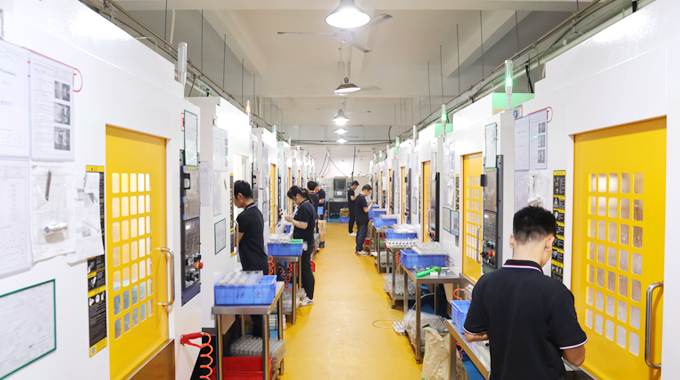
Why is aluminum suitable for die casting?
Aluminum is suitable for die casting because it is lightweight, strong, and has excellent casting properties. It has low melting points and good fluidity when molten, making it easy to inject into molds. Additionally, aluminum offers good corrosion resistance, making it ideal for industries like automotive, aerospace, and electronics.
What are the types of pressure die casting?
The main types of pressure die casting are high-pressure die casting and low-pressure die casting. High-pressure die casting involves forcing molten metal into a mold at high speed and pressure, while low-pressure die casting uses lower pressure for slower metal flow, typically for more complex or larger parts.
What is the low pressure die casting process?
Low-pressure die casting involves using low air pressure to push molten metal into a mold cavity. The metal is injected under controlled pressure, filling the mold gradually. This method allows for precise control over the metal’s flow, resulting in high-quality castings with minimal porosity.
What is low pressure casting?
Low-pressure casting is a manufacturing process where molten metal is injected into a mold under low pressure, typically less than 2 bar, which allows for better control of the metal's flow. This process is commonly used for producing high-precision and complex parts in industries such as automotive and aerospace.
What is the difference between high pressure die casting and low pressure die casting?
The main difference between high-pressure die casting and low-pressure die casting is the amount of pressure used to inject molten metal into the mold. High-pressure die casting uses high pressure (over 1000 psi) for rapid metal flow, suitable for smaller parts, while low-pressure die casting uses much lower pressure and is ideal for larger, more complex parts.
What are the advantages of low pressure die casting?
Low-pressure die casting offers several advantages, including high precision, good surface finish, and the ability to cast complex shapes with intricate details. It also allows for fewer defects, such as porosity, and produces parts with better material consistency and fewer voids, making it ideal for industries requiring high-quality components.
Which is better, low pressure die casting or sand casting?
The choice between low-pressure die casting and sand casting depends on the specific requirements of the part. Low-pressure die casting is ideal for producing high-precision parts with excellent surface finish, while sand casting is better suited for large parts or applications where precision is less critical and cost is a major factor.
What are the disadvantages of pressure die casting?
Pressure die casting, both high and low, has some disadvantages. It can be more expensive due to the cost of molds, particularly for high-pressure die casting. Additionally, the process may not be suitable for producing parts with extremely thin walls or for materials with high viscosity, which can lead to incomplete molds.
What is the difference between gravity die casting and low-pressure die casting?
Gravity die casting relies on gravity to fill the mold, while low-pressure die casting uses air pressure to push molten metal into the mold. Gravity die casting is typically used for larger parts with simple shapes, whereas low-pressure die casting is better suited for parts with complex shapes and higher precision.
Is pressure casting expensive?
Pressure casting, particularly high-pressure die casting, can be expensive due to the need for specialized equipment, high-quality molds, and the cost of maintaining the system. However, for large production volumes, the unit cost per part tends to decrease, making it more economical in the long run.
Which of the following is a disadvantage of using low-pressure die casting technology?
One of the disadvantages of low-pressure die casting is the slower casting cycle compared to high-pressure die casting. The slower metal flow may also result in increased cycle time, which could impact productivity in high-volume applications.
What is the minimum wall thickness for low-pressure die casting?
The minimum wall thickness for low-pressure die casting typically ranges from 2 to 4 mm, depending on the part’s complexity and the material used. Thinner walls may be difficult to achieve with this method, and might require other casting processes like high-pressure die casting or investment casting.
Why use high-pressure die casting?
High-pressure die casting is preferred when high-volume production is needed. It is particularly effective for creating small to medium-sized parts with fine details and smooth surfaces. The rapid injection of molten metal results in quick cycle times, making it more efficient for mass production.
What are the risks of die casting?
Some risks associated with die casting include the potential for defects such as porosity, cold shuts, and misruns. Additionally, improper mold design or material selection can result in low-quality parts. Die casting also requires expensive equipment and tooling, which may limit its cost-effectiveness for smaller production runs.
What is an example of low-pressure die casting?
An example of low-pressure die casting includes producing aluminum engine blocks for the automotive industry. These parts require high precision and strength, and low-pressure die casting ensures that the metal fills the mold uniformly, resulting in high-quality, defect-free parts.
What are the disadvantages of cold die casting?
Cold die casting can result in low-quality castings, such as rough surface finishes and inadequate filling of mold cavities. It’s not typically used for high-precision parts or parts requiring strength and durability, as the slower cooling rate may lead to more defects in the final product.
What are the failure modes of die casting?
Common failure modes in die casting include porosity, cold shuts, misruns, and flash. These issues can be caused by improper die design, insufficient molten metal flow, or issues with the temperature and pressure conditions during the casting process.
Why is die casting bad?
Die casting can be considered bad in certain applications where cost, material waste, or production speed are critical factors. The high cost of tooling, potential for defects, and limitations in part complexity can make die casting less ideal for low-volume production or when extremely detailed and complex parts are required.
What are the main defects in the die casting process?
The main defects in the die casting process include porosity (air bubbles within the casting), cold shuts (where two streams of molten metal fail to fuse), misruns (when the molten metal doesn't completely fill the mold), and flash (excess metal around the part).
How to detect porosity in castings?
Porosity in castings can be detected using techniques such as ultrasonic testing, X-ray inspection, or dye penetrant testing. These methods help identify voids or air pockets within the casting, which can compromise the strength and integrity of the part.
